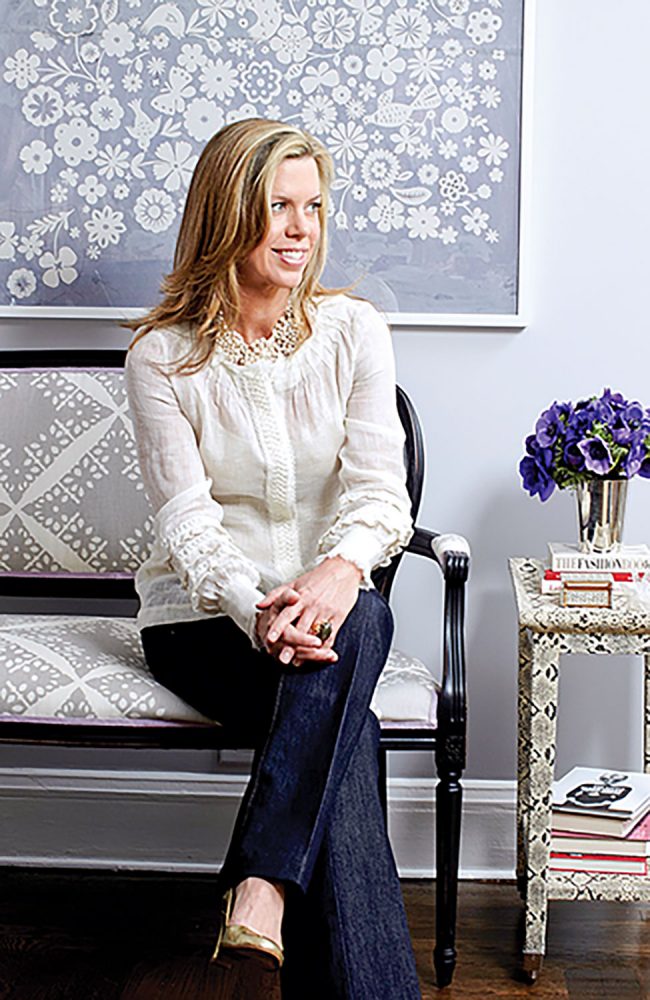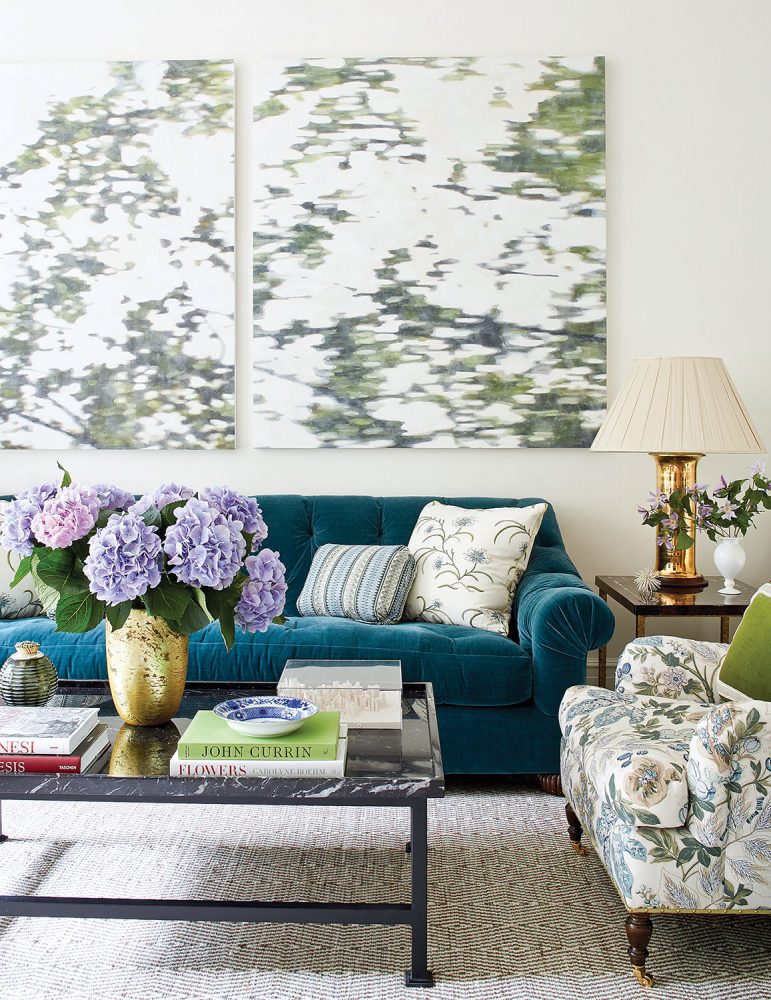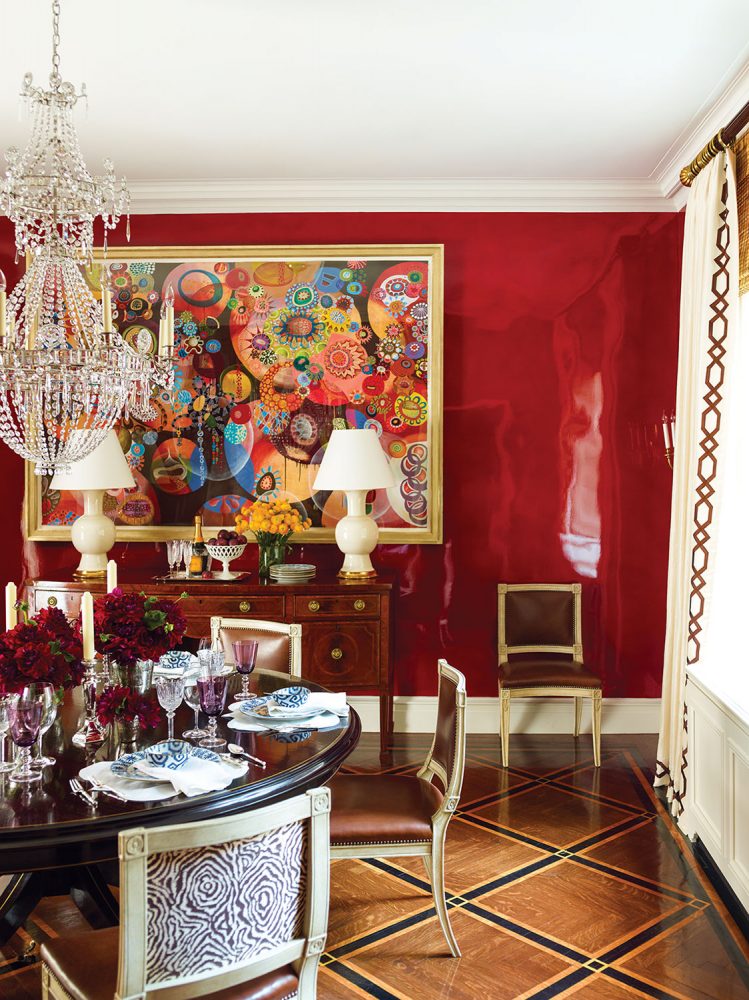
“I don’t think of color as being my calling card, but when you look at my work, it’s there,” says New York interior designer Ashley Whittaker. Though she swaths rooms in everything from pale blues and greens to rich chocolate and cranberry, she insists that color is only one part of creating a successful design. “Anyone can have a blue-and- white room,” says Whittaker, “but you also need layers and depth through a balance of different vernaculars, textures, and interesting accessories.”
Whittaker prefers the concept of balance over mix. She says it’s easy to have a mix for the sake of a mix, but real balance is a studied composition of old and new, fabricated and customized, color and texture. The keys to achieving it? A clear knowledge of the history of design and a vision for how a room will live—advice she received early in her career when she was working with decorator Markham Roberts.
“He stressed the importance of understanding the fundamentals of architecture, interiors, and furniture design,” Whittaker says. “Some people get caught up in smaller points, fabrics, this or that, but the whys and hows of design are the bigger questions.”
To answer those questions, Whittaker says she always starts with the furniture plan. “I work with my client to determine how they are going to live in the space and how they plan to entertain,” she says. “Once I understand those things, then I can fill in the rest.”

Though she makes it sound simple, her approach—often referred to as neotraditional—is anything but basic. She leans toward Louis XVI, Chippendale, and 18th-century furniture forms for their classic design, and Parsons style for its clean, hard edges. “It’s fun to take something old or antique and make it feel fresh and pretty,” she says. “Take a Napoleon III chair from the 19th-century, for instance, and re-cover it in a Quadrille fabric. The print is updated, but the piece is still grounded in history. It adds a wonderful value for clients, and their story becomes part of its provenance.”
Although Whittaker admits having a preference for antiques, she doesn’t limit her choices. “Even though those things are nearly impossible to replicate, we are seeing some wonderful new things coming out of High Point,” she says. “There are so many antique forms resurfacing in design, and the furniture and accessories market is exploding.”


Just as Whittaker likes to refresh antiques with new fabrics, she often tweaks new pieces to give her client that one-of-a-kind look. “There’s so much customization in design now, it’s almost expected,” she says. “There’s nothing better than finding a discontinued paper or fabric and reprinting it in a new color.”
The designer’s approach to color is part of what makes her spaces inimitable. “Color is the thread that carries the eye from room to room,” Whittaker says. “Sometimes you can look for it in the beginning of a project, but sometimes it doesn’t reveal itself until you are halfway through the planning stages.”


A Florida native, Whittaker has always been drawn to tropical colors and botanical prints. For other inspiration, she looks to fabrics, art, and the hand-painted wallpapers she’s so fond of. “Scenic papers from Gracie and de Gournay set up a palette so well. Their details lead us down so many beautiful paths,” she says. “Sometimes you find your lead color in the smallest place—a leaf or flower or the feathers on a bird.” Using that cue, Whittaker splashes the color on walls, upholstery, and accessories, layering textures and introducing complementary tones along the way.
Still, she says, it doesn’t matter how colorful, layered, or carefully planned a space is. “For a house to be a home, it has to be happy.”

Ashley’s New York Musts
The designer divides her time between her home in Millbrook, New York, and her office on Manhattan’s Upper East Side. Here’s where you can find her in the city:
DINING
Lunch: When she’s craving a burger and cottage fries, Whittaker says J.G. Melon is a can’t-miss. She frequents the location a couple of blocks from her office. Dinner: For Whittaker, the Cajun chicken dish at Le Bilboquet is a winner. Just be sure to make a reservation.
FAVORITE HOTEL FOR A COCKTAIL
For after-work refreshments, Whittaker heads to Bemelmans at The Carlyle. Named for the illustrator of the Madeline children’s books, the Art Deco bar is the only surviving public space that showcases his large-scale murals.
GO-TO FLORIST
For events big or small—or just a cheery bouquet, she uses Connie Plaissay at Plaza Flowers. Whittaker’s favorite blooms are anemones.
POP-IN SHOP
At the Upper East Side shop KRB, Whittaker likes the evolving selection of antique and vintage furniture and new home accessories from the oh-so-chic owner and curator Kate Rheinstein Brodsky.
By Cathy Still McGowin
